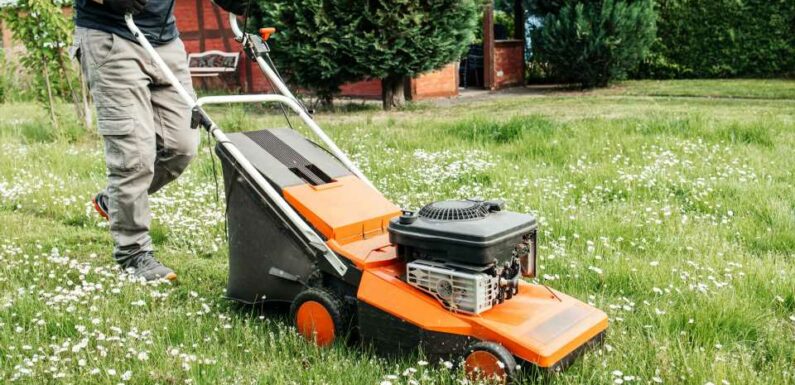
MOWING your lawn during a dry spell could encourage unwanted weed growth and even moss, according to a gardening expert.
It can be tempting to trim your garden during a period of drought, but a gardening enthusiast revealed it can be harmful.
Speaking to The Express, Kate Turner, a gardening expert from Miracle-Gro, revealed the most common mistakes and the ''worst thing to do'' when it comes to mowing.
“The most important thing is, if you’re mowing, raise your mower blades so they’re up high," she said.
“Also, if we’ve got dry spells like we’ve got at the moment, I’d stop mowing."
The expert shared that "scalping" your lawn encourages weeds and moss to grow.
Follow our Gardening tips blog for updates...
- By Jennifer Korn
Best time to remove weeds revealed
De-weeding after a spell of rain could save you a lot of time and hassle and lead to a healthier garden, according to One Good Thing.
You’ll have a much easier time removing weeds when the ground is wet because damp soil is more flexible and should allow you to rip out the root of a weed intact.
Yes, there is an extra mess but it’s much easier than trying to dislodge weeds when the ground is rock-hard.
It also minimizes ripping the body from the stem, getting a clean sweep instead.
- By Jennifer Korn
Natural weed killer has narrow window
Corn gluten, which you can get on Amazon, is a winning formula for eliminating weeds, according to Midwest Grows Green.
However, there’s a narrow window of opportunity to use the powder because if you apply it too soon, you’ll allow dormant weed seeds to dodge the corn gluten’s preventative effects.
If it’s applied to established weeds, they’ll just build resilience to its pre-emergency herbicidal effects.
The key is to apply the corn gluten when it attacks a weed just before germination or sprouting.
- By Jennifer Korn
$4 weed killer
According to the experts, the secret to a weed-free garden and lawn is lime, and no, it’s not the kind you eat.
Lime used in gardens is made from crushed-up limestone, rock, or dolomite, and when applied to soil, it raises the pH level, making the soil less acidic.
Lime also contains magnesium and calcium, which are vital for a healthy garden.
It’s actually the lack of calcium in soil that provides the condition for weeds to thrive in.
- By Jennifer Korn
Want to learn more? Call your local gardening center
If you are unsure of how to care for your plants, hop on the phone or go online and get in touch with your local garden center.
Nursery employees will have an up-to-the-minute understanding of your area’s conditions and any plant care tips that are unique to your climate and soil.
Calling them with a question or stopping in is totally fine – they want your plants to thrive, too.
- By Jennifer Korn
Why gardens are so popular right now
Gardening has become an increasingly common hobby.
During the early months of the Covid-19 pandemic, an interest in gardening was reported by many media outlets, according to The Ecological Society of America (ESA)
The exact reason for the spikes has not been determined, but the ESA reported that the spikes are being investigated further.
- By Jennifer Korn
One product guarantees a low-maintenance garden
One very simple product can help amateur gardeners create a low-maintenance garden and works to keep plants and flowers healthy and thriving.
When it comes to the different products available for gardeners to consider, some are more efficient and time-effective than others.
If you’re looking for an effective way to keep up with your garden or lawn while also saving time on maintenance, consider mulch.
Mulch is a top-layer covering used to protect soil.
Experts say the best mulch is biodegradable and made of natural materials, because they’ll decompose and enhance the soil underneath.
- By Jennifer Korn
Flattening a bumpy lawn, conclusion
Fill the uneven patches using a hard-bristled brush to create a level surface, and water them well to encourage new grass to grow.
Finally, sow some fresh grass seeds on any areas that are bare and need re-covering.
Make sure to distribute more on scarce patches or on lumps that have born torn up.
Always lay grass seeds on a mild, spring day and make sure to water them well once the seeds have been sown.
- By Jennifer Korn
How to flatten a bumpy lawn, continued
Make sure to water the areas well to encourage new grass to grow to create a seamless finish.
For larger lumps and bumps, you’ll need a few extra tools.
Start by mowing the lawn and then use a rake to uplift thatch (clumps of dead grass) and other organic matter.
Once you’ve removed uneven patches, top-dress them with sand and soil using a 40:60 ratio.
- By Jennifer Korn
How to flatten out a bumpy lawn
Flattening out bumpy ground can be done at any time of the year, but the gardening experts at The Daily Express reported it is best to get started in spring.
Start with smaller bumps (less than one inch) and simply use your foot to press them firmly down.
If you have holes made by animals, fill them with topsoil, compressing the earth with your foot to create a solid surface.
- By Jennifer Korn
Worst flowers for hay fever sufferers
Experts say some of the most problematic flowers for hay fever sufferers are:
- Daisies
- Sunflowers
- Baby’s breath
Best flowers for those with hay fever
Chris Bonnett from Gardening Express recommends the following plants for those who suffer from allergies:
- Roses
- Yarrow
- Camellia
- Geranium
- Lobelia
- Fruit trees
- Conifer
Source: Read Full Article